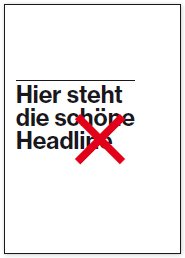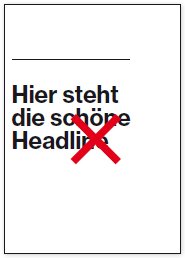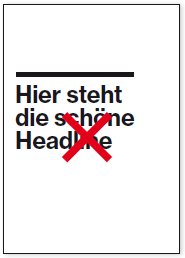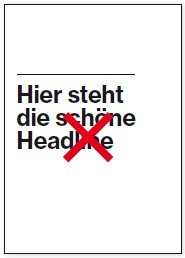Line thickness basic line
| Format | Line thickness | On moving images |
|---|---|---|
| DIN Lang | 0,5 pt | 1,0 pt |
| DIN A6 | 0,5 pt | 1,0 pt |
| DIN A5 | 0,5 pt | 1,0 pt |
| DIN A4 | 0,5 pt | 1,0 pt |
| DIN A3 | 1,0 pt | 1,5 pt |
| DIN A2 | 2,0 pt | 2,0 pt |
| DIN A1 | 4,0 pt | 4,0 pt |
These specifications only apply for the basic line.
For larger formats, the line increases proportionate to the respective claim and logo size.
If the line is negative on moving images for formats up to A3 size, the line thickness must be adjusted to ensure reproducibility.
Calculating the line thickness
The line thickness is linked to the font size of the text below the line. For all text elements with font sizes below 25 pt, the standard line thickness is 0.5 pt.
However, for larger text, the line thickness increases proportional to the font size. The line thickness is determined by dividing the font size by 30.
This principle does not change for different fonts.
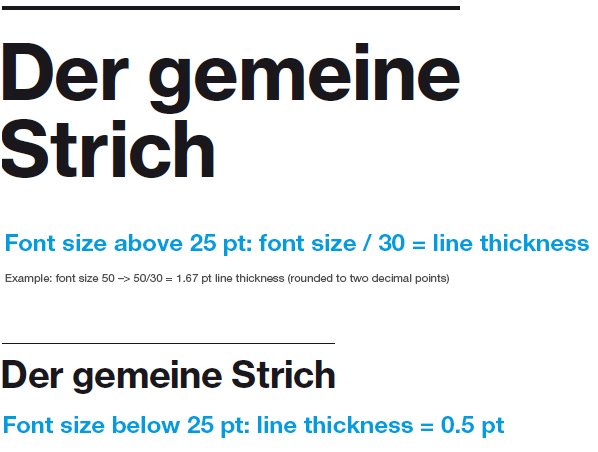
Maximum of two different line thicknesses per layout:
A second line thickness can be used in addition to the 0.5 pt line in layout if the headline has a font size above 25 pt. This line must be applied above the headline that is larger than 25 pt. As a rule, a maximum of two lines with different thicknesses can be used per layout.
Calculating the spacing from line
The distance between the text and information or decorative line is dependent on the text font size. This is measured from the baseline of the text to the lower edge of the line. It should be 2.25 times the height of the smallest letter, x. It is irrelevant whether the text below the line is lower case, upper case or both.




